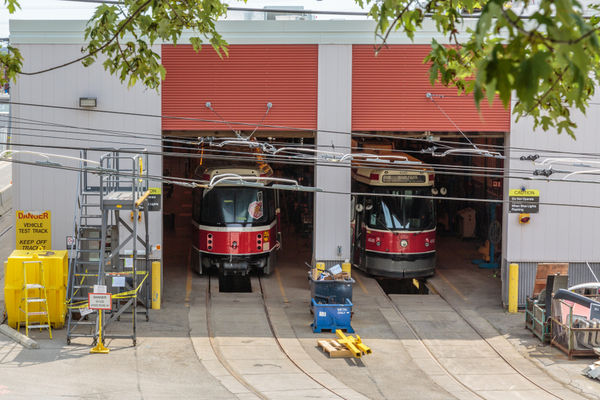Worker crushed between work car and pick-up truck

The Toronto Transit Commission (TTC) has been fined $265,000 after a worker was fatally crushed between a work car and a pick-up truck. The court also imposed a 25-per-cent victim fine surcharge as required by the Provincial Offences Act.
On Oct. 1, 2017, the TTC assigned track maintenance workers to replace a section of the Scarborough Rapid Transit line (SRT) near the Scarborough Town Centre.The McCowan yard is comprised of a yard, a car house containing tracks for rail car maintenance and a substation. The yard includes a “runaround” track that allows for the loading and unloading of materials and tools onto a work car or train which can then travel on the SRT line to the track area. Road vehicles can also enter the yard.
The work car involved in the event consisted of two pieces of equipment: one, called the "ST-1," is a diesel-powered unit and the other, called "ST-2," is a flat-bed rail car with a small crane. ST-1 has two operator's cabs, one at each end of the unit facing in opposite directions.
The ST-1 work car overhangs the rail line on both sides, which results in an outswing of the deck of the work car. The portion of the train behind the rear axle swings away from the track centreline, taking up a length of just under one metre from the outer rail. This is referred to as "dynamic width" or "tail swing."
A pick-up truck was parked near ST-2 to minimize the carrying distance of materials from the truck to ST-2. After loading materials, including a replacement rail and a power pack, onto ST-2, the work car operator began to prepare to leave the yard. However, it was discovered that the power pack would not start because its battery was dead. The power pack is a diesel-powered hydraulic unit used in welding track as part of the structural maintenance of the SRT.
The crew and assistant foreman decided to attach jumper cables from the pack to the battery of the pickup truck. The truck was moved adjacent to ST-2 to charge the portable power pack. The cables were not long enough, so the truck was moved closer to ST-2, a distance later measured to be 69 to 80 cm from the work car. However, the booster cables were too short to secure a connection and the power pack was lifted off ST-2 with its crane by the work car operator, to bring it closer to the truck battery. After it was successfully boosted and started, the power pack was replaced on ST-2 with the crane, and left running.
The work car operator proceeded to the front (forward-facing) cab of ST-1, to prepare to leave; other workers got in the pick-up truck for departure and the work car operator was cleared by transit control to proceed.
The work car operator signalled the imminent departure by sounding the work car horn twice.
The operator's sight lines from the forward-facing cab on ST-1 meant that the operator's view was obstructed by the work car, such that the pick-up truck would not have been visible to operator from the seat of ST-1.
The TTC had a procedure in place that required a monitor (watcher) if the operator's view at the front of the train was obstructed to ensure work cars did not make contact with workers, vehicles or equipment. However, at the time of the event, a qualified SRT work car monitor was not required at the McCowan Yard at the non-driving end of the work car. This procedure has since been changed.
Just before the work car started to depart, there was only one remaining crew worker who had not yet entered the truck. That worker proceeded to walk around the rear of the pick-up truck to the rear driver's side door.
The work car started moving just before it was safe to do so, due to the presence of the pick-up in close proximity to the work car.
As the work car proceeded forward, the right rear corner of ST-2 made contact with the driver's side of the pick-up truck, shattering its driver's side window.
The victim was crushed between the back-right corner of ST-2 and the rear driver side of the pick-up. Workers rushed to assist and emergency responders were called. The worker was taken to hospital but succumbed to the injuries several days later.
The defendant failed to take the reasonable precaution of providing a trained and qualified SRT work car monitor to observe the movement of the work car, while in direct communication with the work car operator to ensure the work car did not make contact with workers, vehicles or equipment. This was an offence under Section 25(2)(h) of the Occupational Health and Safety Act.
Source: Ontario Ministry of Labour





